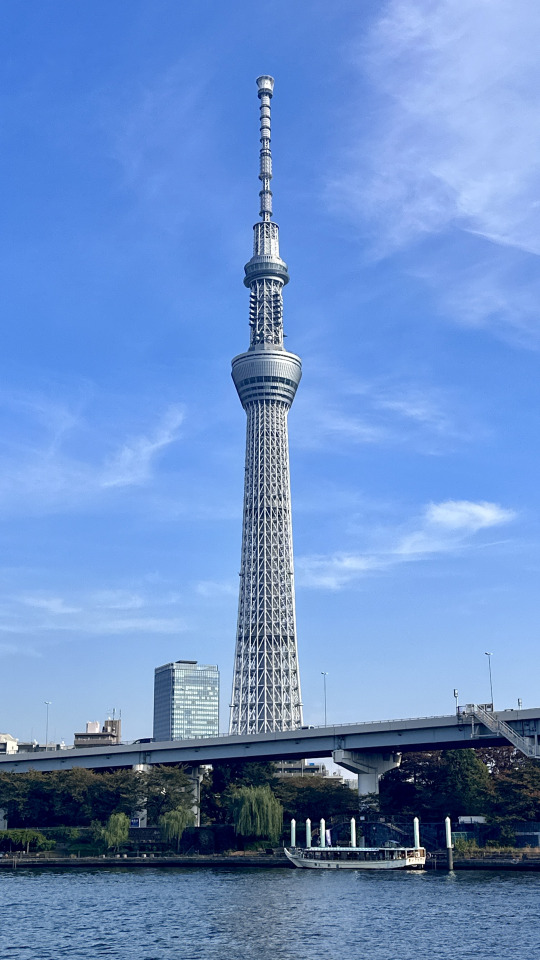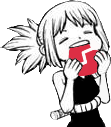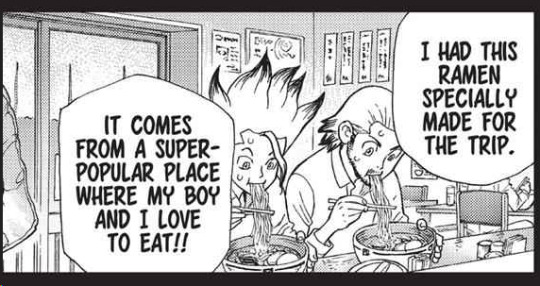#which means they can store a large amount of energy in a small space. This makes them ideal for use in applications where space is limited
Explore tagged Tumblr posts
Text
Worldbuilding idea: a society in which everyone (or near enough everyone) can use magic.
Spells are passed down orally for millennia, resulting in regional differences and localised adaptations.
Different countries and societies that independently develop very similar spells (think, like, the amount of “meat/vegetables wrapped in pastry” foods we have: dumplings, samosas, pasties, pies, gyozas, etc) such as fireball. Of course creating fire is a simple, useful spell that you’d expect any civilisation to have, but it’s approached in different ways across the world: different colours, different ratios of light to heat, some that float and subsist on burning the caster’s magic, some that fly from the hands and burn out quickly unless they hit something flammable…
Children at school have essential spells drilled into their heads the same way they memorise their times tables and ABCs.
Teachers need to memorise spells to detect and nullify all of the common cheating spells such as telepathy, hide writing, illusion, read from afar, etc. Kids are constantly coming up with new spells and alterations on the old ones, and there are always rumours going around about “bypass” spells that the teachers can’t detect.
Magic can be taken from the user’s own internal store or from any other living thing (of course, most people have safeguarding spells on themselves to avoid that; it’s one of the first things they learn at school). It’s replenished with food and sleep, too, but it still requires time in the same way you can’t just eat food and feel fine after working out.
As such, most people have familiars: animals that they take around with them for the primary purpose of using as a battery. They’re bred to have as large energy stores as possible—of course, this means that they have a bottomless appetite, so few have more than one. Less wealthy folk might have unspecialised, non-familiar animals: less useful, but less expensive too.
Plants are another good source of magic, as they don’t move and are less expensive to feed. Some mages would take this too far and let plants and fungi grow on their own body, as a convenient, portable, self-regenerating source of energy. You know how fireproof stuff used to be made out of asbestos and cocaine was in medicine? Yeah, this is the equivalent of that. It went out of fashion soon enough.
Tired, broke college students that skip meals and subsist entirely on magic for much longer than is healthy and use magic to stave off sleep. Bringing back portable plant stores is a common running joke. Some particularly clever, sleep-deprived, and/or desperate folk actually let moss grow on them (“It’s perfectly safe! The roots are shallow, see?”)
Eventually tortoises surge in popularity as a familiar, as they move little and waste minimal energy, and with this comes a resurgence in the use of plants. Tortoises are bred to have thick, concave shells, and portable magic gardens become fashionable. Forums discuss the best plants to use to store the most magic in a small space, and there’s a constant debate between efficient setups, fashionable setups and setups that are best for the tortoise.
Technology that uses runes and written spells and can be recharged by any human, and essentially serves as an easier to use, more accessible version of a spell.
Most people only use the standardised spells they’re taught at school, or follow the instructions for more complicated spells as and when they need them. There’s no shame in it: how often do you make your own furniture, or program your own apps?
Self-taught mages, who make all their own spells and are proud of that fact. Sometimes the spells are unnecessarily dangerous, or terribly inefficient, or accidentally brilliant. Outsiders are horrified and intrigued.
Wealthy noble families who exclusively use their Traditional, needlessly complex, I-Need-You-To-Know-I’m-Better-Than-You magic. Their children need to look both ways furtively before quickly casting “wardrobe portal” instead of “Summon Wraith Servant”, and they beg their parents to let them get a teleport license instead of using their family’s outdated flying machine just to get to school.
Magical disabilities. People with a low internal magic store that are provided a familiar as a service animal, because how can you expect a person to get through the entire day on that little magic? People who are injured or affected by seizures and migraines when using too much magic at a time. And very, very few people who are completely unable to use magic, but every other magical disability tends to get lumped in with them.
Physical disabilities are seen as much less severe. There are spells for blind people to sense the objects around them, and everyone knows one or two spells for silent communication that work for deaf people—even those with walking disabilities can teleport or levitate themselves brief distances.
Of course, being physically disabled sucks out magic quickly, so accessibility spells need to be used sparingly, but the average person assumes it’s not nearly as hard as it is.
#kinda rambly but this idea wouldn’t leave my head#might add to this later#world building#fantasy#writers on tumblr#writing prompts#writing inspiration#rosedtalks
35 notes
·
View notes
Text
Hey!! It’s EXHAUSTING to run a small business — but YOU can help!! Yes, YOU!! YOU have the power to make a difference in other people’s lives. In your own community.
Literally the biggest thing to help us small businesses continue to exist is by giving us money. Shop with us.
BUT THAT’S NOT THE ONLY WAY!!
If you can’t afford to do so, tell your friends to shop there. Help us advertise because advertising is a huge amount of labor and requires tons of money. It’s hundreds of dollars, sometimes thousands, just to appear on the radio for a few minutes. We do what we can with the free advertising and promotion through our social media pages, but often that’s not enough. you can still help.
Also, make it a point to STOP shopping through places like Amazon, Walmart, TJ Maxx, the Dollar Store, Etc. I promise, it’s not as hard as it might sound. If you know the name of a business that feels like it exists everywhere (Starbucks, McDonalds, Barnes & Noble, The Home Depot to name a few) that means the money you give to that business is being sent directly away from the community you live in. Sure, some of it is used to pay the employees in the store, but the location exists because it *profits*. Those profits are not being kept in your community, and unless billionaires regularly visit your neighborhood and spend their money, it’s NOT coming back.
By shopping at these businesses, You are mailing money to people who already have more than they could ever need, and in turn, devastating your local economy and breaking the hearts of your friends, family, and neighbors that work tirelessly to offer you their businesses.
One of the smallest things you can do to help is just to VISIT the businesses in your community. My shop has existed for more than two years, on a Main Street, and still there are people that live less than two miles away discovering we exist for the first time. It makes me smile every time. Stop in and say hi!!
When you shop small, you’re building a stronger community and giving more value to your neighborhood. When you shop at the small local business, you’re paying your neighbors— this will allow them to fix that broken down car in their driveway, replace their roof after 12 years, reseal their windows, buy a new weed whacker, replace that refrigerator they’ve had for 28 years to reduce their energy bills, and give their children better lives. We’re not asking for much. We’re not trying to hire people to build rockets for us so we can go to space. We’re asking for food and shelter. We’re asking to replace the heat lamp in the chicken coop and to have just a little more time to sit by the fire in the wood stove and knit a blanket for our loved ones so there can be some sort of long lasting sign that we existed in this world and we actually made something.
I’m in a small town so this might sound a little rural, but the same goes for cities. The destruction of the small town is also true for the small city neighborhood and contributes to urban sprawl. If the city doesn’t have it, the suburbs do, and people commute to find their “big box stores” as we say, which contributes to the traffic that EVERYONE hates. Shop at the places in your neighborhood — the places that are run by your neighbors.
If you want sources: There are books, articles, studies, that you can read on how this impacts local economies. There are documentaries, podcasts, and lectures on how small businesses create our community cultures and how large corporations are the primary cause of wealth inequality across the world. The information is out there. Please go seek it.
I see and hear so often people describing how they feel a lack of community, they feel alone, they feel like they’re losing their culture and sense of self. This is how culture, tradition, community, art, sustainability, TOGETHERNESS, is built. Shop local. Shop small. Make a difference.
#sociology#economy#sustainability#sustainableliving#shop local#shop small#anti capitalism#late stage capitalism#fuck capitalism#i hate capitalism#community service#artists#art#politics#goblincore#goblin culture#small town america#please share
25 notes
·
View notes
Text
Dr. Stone chapter 1D Trivia post
Spoilers ahead


We knew there was a slippery slope but we didn't know which one it was.
First things first, as we saw, Kaseki was not dead after all, and neither was Francois.
This clears things from chapter 232.5 (Dr. Stone Terraforming) where Kaseki was not shown at all, and although Francois was shown to be at the plane at the moment of the crash, they were never shown to be rescued.

We do get a glimpse at Senku throughout his lifetime (hypothetically at least). The pictured time machine, just like the large one they are building, features the telltale disk from the movie "The time machine" (duh) from 1960, based on a novel by H.G. Wells, written in 1895.

We also see him using a bunch of yagi antennas again, as well as a small satellite dish, all pointed in different directions in his homebrew setup, perhaps in an attempt to catch the signal regardless of which direction it's coming from. A concern I've heard is why would Byakuya contact Senku's future attempt but not the one from his childhood, and the answer likely boils down to the technology. As Xeno said they used a specialized detector to spot tiny bursts of petrification beam

I am not sure what such a detector might entail, but since the petri beam involves a flash of light, perhaps something like a photomultiplier tube could do it, as they can detect individual photons

The Tokyo Sky Tree is a radio tower, housing a restaurant and an observation deck, it is also the tallest manmade structure in Japan with a height of 634 meters, or 532.7 times the canon height of Suika in chapter 178.

Here it looks like they've drawn the wrong design for the medusa capsule, this one has a speaker on the inside like the original that was sent to the moon, whereas once whyman was discovered, they changed the design to one with a small antenna in its place, and a speaker/microphone on the outside for them to communicate.

This is what I feel like in university

Yes we are

next up, energy

1.21 Exawatts has no basis I know of other than being a reference to the 1.21 Gigawatts used by the time machine from Back to the Future. 1 exawatt = 1000000000 gigawatts, so I guess Dr. Brown's machine was actually very fuel efficient.

The (exa)watt is technically not a unit of energy but rather of the rate of energy transfer (or how fast energy's being delivered in layman's terms).
I assume he means (exa) watt-hours, a multiple of the watt-hour, which is an energy unit handy for working with electricity calculations. This amount of energy is equivalent to a bit shy of 900000 megatons of TNT. However, if you could capture 100% of the sun's output (and I mean all of it, a la dyson sphere, not just what hits the earth, and with 100% efficiency) and store it, you could collect that amount of energy in just under 30 seconds. This amount is also probably larger than the consumption of humanity over the last 60 years. It is in fact larger than the energy consumed wordwide between 1800 and 2010 by a factor of about two, going from adding and converting the data here.
https://www.encyclopedie-energie.org/en/world-energy-consumption-1800-2000-results/

Helium 3 is an isotope of helium with a nucleus made of 2 protons and 1 neutron (unlike normal helium which consists of 2 and 2 of each).
Because it's a very light gas, it tends to float away from the earth and get swept off into space much like regular helium does, and it is believed that larger amounts of it will be available on the moon, where it is formed naturally in a slow but steady supply when natural lithium is bombarded with neutrons from cosmic rays. Helium 3 can theoretically function as fuel in a fusion reactor, having the advantage that it does not release neutrons in the reaction, meaning it does not bombard other materials inside the reactor making them radioactive (and He-3 is not radioactive itself either).
The big issues are its low availability and the fact that a reactor for this fuel would need even higher temperatures than the reactors we are experimenting with today, and we are barely starting. On that note, Tsukasa eating chip


These robots are very strange, they walk on their claws, only having wheels at the back and carrying what looks a lot like an old time minecart. If anyone knows what the name Johnny 7 might be referring to, let me know. So far I can see that there was a sentient robot named Johnny 5 in the 1986 film Short Circuit, which looked like this.

I could also note that the robots have "Battery A" and "Battery B" noted on them.
It might just be a coincidence, but I like to think it might be a nod to an early project in the series, the cellphone.
The cellphone had two battery packs, the lead acid pack to run the vacuum tube filament, and Gen's manganese battery pack, which ran the tube anode. Historically these two battery packs were designated "A" and "B".

For the record this is also the reason you can buy AAA, AA, C, and D size cells, but no B batteries. Those batteries used to exist, but they don't anymore, since the equipment they powered is long obsolete. Next up, Chrome has a flashback to Ruri's flashback.


Kirisame's headpiece has reverted to the seldom seen spiral horn version, she is most typically seen with the one shaped like cat ears.

Next up:

No, I will not apologise


This does not seem to be the same restaurant mentioned in chapter 43, though I guess it could have changed, since Senku seems older (might it be the restaurant in the sky tree?)

Also Senku puts on Byakuya's coat that was on the back of his chair.

Speaking of chapter 43...

Ukyo is not well

It's no longer Nanami Corp, it's just Ryusui

To conclude, my take on what is happening

It's been hinted multiple times that we may see the involvement of alternate timelines, which comes as an answer to the occurence of a paradox if Senku were to travel back in time or even just contact himself. The title of the chapter comes to echo this. Higher dimensions have been a bit of a popular topic lately with people making games in four dimensions, etcetera. This however is not that by the looks of it, the fourth dimension mentioned would be an additional time dimension, which can be interpreted as the existence of convergent or divergent timelines. One of the less obvious things that remain to be seen is how Byakuya (or someone pretending to be him) knew when and where to contact someone in a different timeline. We also don't know where in time they are located. It is assumed at first that the incoming message is from the future but if we are dealing with a parallel universe it may as well be coming from the past or even be coming in in "real time" (as if such concepts of relative time held up in multidimensional time).
Suika cute pose

#dr. stone trivia#dcst#dr stone#dr. stone#drstone#dcst senku#dr stone senku#senku dr stone#senku ishigami#dcst byakuya#dr stone byakuya#byakuya dr stone#byakuya ishigami#dcst xeno#dr stone xeno#xeno dr stone#xeno houston wingfield#xeno houston#dcst suika#dr stone suika#suika dr stone#dcst kohaku#dr stone kohaku#kohaku dr stone#dcst tsukasa#dr stone tsukasa#tsukasa dr stone#tsukasa shishio#dcst chrome#dr stone chrome
63 notes
·
View notes
Text
Personal Issues with Witchcraft and Worship
I’ve been trying to figure out how I wanted to word this for my own documentation and I think I’ve figured it out. I haven’t been practicing for very long, but I struggle with the way that other people practice vs what is realistic and practical for me as person, based on both my abilities and preferences. I know that everyone’s practice is unique, but it’s difficult when I WANT to do some of these things and either can’t or don’t. The biggest one for me is a connection to nature. I think nature is beautiful and I have a huge appreciation for it, but the only nature I’ve ever felt comfortable being in is the ocean, and occasionally just being outside in the winter. I have EDS, a connective tissue disorder that affects every part of my body and hinders the way I can comfortably interact with nature. I can’t regulate my body temperature, and heat and humidity ramps this up x100, so being outside if it’s not overcast and 40 degrees out is exhausting, painful, and potentially dangerous. I also have intense reactions to bug bites, which seem to happen nearly every time I leave the house anymore. Particularly since I work with and worship the sun god and the hunt goddess, this lack of connection to nature sometimes makes me feel lacking, even though I appreciate my deities and nature in my own ways. I still wish I could, and have tried repeatedly, to comfortably exist outside and it just…doesn’t work for me.
Smaller things include things like smoke cleansing and meditation. With smoke cleansing in particular, it’s not a big deal because I usually use spray and sound cleansing instead, but I still wish I could do it because it’s apart of both the culture I come from and the practices I follow. I find meditation doesn’t work for me because I usually spend a decent amount of time daydreaming and being in my own head, so meditation is almost too easy for me and doesn’t always have the desired effect. I’ve seen different takes on mediation in different spiritual spaces, but it comes up a lot in books I’ve read and it’s just something that I don’t connect with as much.
This last one is totally on me, but I also wish I had more of an irl community. A small portion of this is because I can’t always afford some of the events that are put on by local metaphysical stores, but mostly it’s because I’m kind of…not quite afraid to, but something like that. I’m worried of coming off as shy and ignorant, which I know practically that I probably won’t but I do worry about it, and I also worry about telling people about it. I live with my partner and while he’s not a mean or judgmental person towards me, he’s definitely a skeptic and doesn’t believe in anything he can’t see. While I don’t think he’d be mean or anything if I were to go to an event (hell, he went to an event labeled Pagan Picnic with me because they had a bunch of vendors), I don’t really want to have the conversation about beliefs with him since this has largely developed after we started dating because I feel uncomfortable about it. I wish I could just go and avoid the conversation completely, you know? I don’t know.
But yeah, I wanted to make this post both for myself, so that I can hopefully look back on this in the future and have moved past some of this, but also to point out how people with disabilities and other health issues don’t always practice the same way that able bodied people do, in more than just low energy ways.
#hellenism#paganism#witchcraft#hellenic polytheism#apollo#artemis#spoonie#disabilties#ehlers danlos syndrome#paganblr#witchblr
7 notes
·
View notes
Text
Embracing the Sun: How Solar Energy and Smart Solar Solutions Are Shaping Our Future

In today’s fast-changing world, people everywhere are looking for cleaner, smarter, and more affordable ways to power their lives. One of the most exciting and accessible solutions? Solar energy.
We’ve all seen those shiny panels on rooftops or in open fields. But solar energy is more than just panels — it’s a way to tap into the most powerful, natural energy source we have: the sun. Let’s explore how solar energy works, why it matters, and how solar solutions are making it easier than ever for everyone — homeowners, businesses, and communities — to be part of the green revolution.
What is Solar Energy?
Solar energy is power that comes from the sun’s light and heat. Every day, the sun sends an enormous amount of energy to the Earth — more than enough to power the entire planet many times over.
Thanks to modern technology, we can now capture this energy using solar panels, which convert sunlight into electricity. These panels are made up of photovoltaic (PV) cells, which absorb sunlight and turn it into usable power. This clean electricity can then be used to run homes, businesses, and even vehicles.
Why Solar Energy Matters
Solar energy isn’t just a trend — it’s a smart response to some of the biggest problems we face:
Rising electricity costs: Traditional energy prices are increasing every year. Solar power helps people save money by reducing or even eliminating monthly electric bills.
Climate change: Unlike coal or gas, solar power doesn’t pollute the air or contribute to global warming. It’s a clean, renewable energy source that helps protect the environment.
Energy independence: With solar, individuals and communities can produce their own power, making them less dependent on national grids and fossil fuels.
Long-term savings: Though installing solar panels comes with an upfront cost, they quickly pay for themselves over time — and many systems last 25 years or more.
Smart Solar Solutions for Every Need
Today, solar energy is more flexible and affordable than ever. Thanks to innovation and smart solar solutions, there’s something for everyone:
1. Rooftop Solar Panels
The most common and practical choice for homes and small businesses. These panels are installed on your roof and generate power directly for your building. Extra energy can even be sold back to the grid in some regions — a system known as net metering.
2. Solar Farms and Parks
Large open spaces can host solar farms, which generate energy for entire neighborhoods or towns. These are ideal for companies or governments looking to support clean energy on a big scale.
3. Off-Grid Solar Systems
Perfect for remote areas with no access to electricity. Off-grid systems include batteries to store power, making them reliable day and night. They’re changing lives in rural communities around the world.
4. Hybrid Solar Systems
These systems combine solar panels with batteries and grid power. On sunny days, they store extra power. On cloudy days or during the night, you can draw from the battery or the grid. This mix ensures you always have electricity when you need it.
5. Solar Water Heaters and Lights
Beyond electricity, solar energy can also be used for heating water and lighting streets or gardens. These smaller, cost-effective solutions make a big difference, especially in developing regions.
Is Solar Right for You?
If you’ve ever wondered whether going solar is a good idea, here are a few questions to ask:
Do you have a sunny roof or open space?
Do you want to lower your electricity bill?
Are you concerned about your carbon footprint?
Are there any local government incentives or subsidies?
In many cases, the answer is “yes” to most or all of these — and that means solar energy is a real opportunity.
The Future is Bright — and Solar
We’re entering a new era where energy is no longer just about big power plants and oil pipelines. It’s about smart, sustainable solutions that work for people and the planet.
Solar energy empowers individuals, supports local jobs, boosts economies, and builds a greener future. It’s simple, smart, and here to stay.
Whether you're a homeowner looking to save money, a business aiming to reduce emissions, or a community seeking reliable power, solar solutions offer a path forward — one that’s clean, powerful, and powered by the sun.
1 note
·
View note
Text
How Much Does a 10kW Solar Battery Cost in Sydney? — A Complete Guide by Ads Solar
As Sydney continues to embrace clean energy, many homeowners and businesses are looking to take their solar energy systems to the next level with battery storage. A 10kW solar battery is a popular size for medium to large households and commercial properties aiming to store excess solar energy and reduce reliance on the grid. But the most common question we get asked is: “How much does a 10kW solar battery cost in Sydney?”

✅ What is a 10kW Solar Battery?
Before diving into pricing, it’s important to understand what a 10kW solar battery means.
10kW refers to the power rating — the maximum amount of electricity the battery can deliver at a given time.
Storage capacity is measured in kWh (kilowatt-hours), which defines how much energy the battery can store.
Typically, when people refer to a 10kW solar battery, they are talking about a battery that can handle 10kW of output power and usually stores around 10kWh to 15kWh of energy.
These batteries are suitable for:
Homes with a 10kW solar system installed
Properties with high daytime and evening electricity usage
Small businesses or commercial buildings seeking energy independence
💰 So, How Much Does a 10kW Solar Battery Cost in Sydney?
🔹 Average Price Range
As of 2025, the cost of a 10kW solar battery in Sydney typically ranges between $9,000 and $16,000, depending on several key factors such as:
Brand and battery type (e.g., lithium-ion or lead-acid)
Storage capacity (e.g., 10kWh, 13kWh, or 15kWh)
Installation complexity
Additional components (e.g., inverters, backup systems)
Government rebates and incentives
Here’s a breakdown:
Battery Size (kWh)Estimated Cost (Installed)10 kWh$9,000 — $12,00013.5 kWh (e.g. Tesla Powerwall)$13,000 — $15,50015 kWh$14,000 — $16,000
At Ads Solar, we offer custom 10kW solar battery solutions tailored to your needs with transparent pricing and expert installation.
🔍 Key Factors That Affect the Cost
1. Battery Brand & Technology
Some of the top brands offering high-efficiency 10kW solar batteries in Sydney include:
Tesla Powerwall 2
Sungrow
LG Chem RESU
BYD
Alpha ESS
Tesla and LG tend to be on the premium end, offering advanced features, longer warranties, and sleek design. Sungrow and Alpha ESS are more cost-effective options while still offering excellent performance.
2. Installation Costs
The complexity of installation can significantly impact the total cost. This includes:
Electrical upgrades (if needed)
Space availability
Wall or floor mounting
Battery location and cabling
At Ads Solar, we assess your site beforehand to give you a fixed quote — no hidden surprises.
3. Inverter Compatibility
If your existing inverter isn’t compatible with battery storage, you may need a hybrid inverter or a separate battery inverter, adding $1,000–$2,000 to the total cost.
4. Battery Storage Capacity
While the battery may have a 10kW output capacity, the energy storage capacity (kWh) affects the price. A 10kWh battery will naturally cost less than a 15kWh system.
🌞 Should You Pair a 10kW Solar Battery with a 10kW Solar System?
Yes, absolutely.
A 10kW solar system produces enough power for most large households or small businesses in Sydney. However, without battery storage, excess solar energy is sent back to the grid at a much lower feed-in tariff, usually just 5 to 10 cents per kWh.
With a 10kW solar battery:
You store excess solar energy during the day.
Use it at night or during peak tariff times (when grid electricity is expensive).
You become more energy-independent and reduce your reliance on power companies.
⚡ What are the Benefits of Installing a 10kW Solar Battery in Sydney?
✅ 1. Energy Independence
Store your solar power and reduce reliance on the electricity grid.
✅ 2. Backup During Blackouts
Choose a solar battery with backup capabilities to keep your lights and appliances running during a power outage.
✅ 3. Save More on Energy Bills
Use your own stored energy during peak hours instead of buying expensive electricity.
✅ 4. Environmental Impact
Minimise your carbon footprint by maximising your use of clean, renewable energy.
✅ 5. Increase Property Value
Homes with solar + battery systems are attractive to eco-conscious buyers and may command a higher price.
🏆 Government Rebates & Incentives in NSW (2025)
The New South Wales government and the Federal Government of Australia offer a range of incentives and rebates that can reduce the upfront cost of installing a 10kW solar battery.
Some of these include:
Small-scale Technology Certificates (STCs)
NSW Empowering Homes Program (offering interest-free loans and battery rebates)
Federal Solar Battery Incentives (under certain conditions)
Ads Solar will guide you through the process of claiming available rebates to reduce your out-of-pocket costs.
🔋 Best 10kW Solar Batteries in Sydney — Our Top Picks
1. Tesla Powerwall 2
Capacity: 13.5kWh
Warranty: 10 years
Features: Backup power, smart app, scalable
Cost: $14,000 — $15,500 (installed)
2. Sungrow SBR Battery
Capacity: Modular (9.6kWh–25.6kWh)
Warranty: 10 years
Features: High voltage, compact design, great value
Cost: ~$10,000–$13,000 (for 10kWh to 13kWh)
3. Alpha ESS Smile-B3
Capacity: 10kWh+
Warranty: 10 years
Features: Affordable, good for residential systems
Cost: ~$9,500 — $12,000
🛠️ Custom 10kW Solar Battery Packages — What’s Included?
When you choose a custom 10kW solar battery package from Ads Solar, it typically includes:
High-efficiency battery (Tesla, LG, Sungrow, etc.)
Hybrid inverter or compatible battery inverter
Full installation and commissioning
Smart energy management system
Warranty and ongoing support
Optional backup power functionality
📈 What’s the ROI on a 10kW Solar Battery?
While solar battery systems have a higher upfront cost, the long-term savings on electricity bills and the added benefit of energy security make them a solid investment.
Estimated annual savings: $1,000 — $2,500, depending on usage patterns
Payback period: 6 to 10 years
Added benefit: Avoid peak electricity prices, reduce feed-in wastage, and gain blackout protection
With rising electricity rates in Sydney, the ROI is expected to improve each year.
🔧 Installation with Ads Solar — Trusted Experts in Sydney
At Ads Solar, we make going solar simple, reliable, and affordable. As a leading solar battery installer in Sydney, we offer:
Free consultations and site assessments
Tailored solar + battery solutions
Industry-best warranties
Certified and experienced solar electricians
Ongoing customer support
Whether you’re looking for the best 10kW solar battery in Sydney or want to pair it with a new 10kW solar system, Ads Solar is here to help.
🧾 Final Thoughts — Is a 10kW Solar Battery Worth It?
If you already have a 10kW solar system or plan to install one, adding a 10kW solar battery is a smart move — especially if you’re serious about reducing electricity bills, increasing self-sufficiency, and future-proofing your home or business.
While the upfront cost ranges from $9,000 to $16,000, the long-term benefits — financial and environmental — make it a worthwhile investment for many Sydney residents.
📞 Get Your Free Quote from Ads Solar Today
Ready to make the switch? Contact Ads Solar today for a free, no-obligation quote on 10kW solar battery installation in Sydney. Our expert team will guide you every step of the way — from system design to installation and beyond.
📍 Sydney-wide service | ⚡ CEC-accredited installers | 🔒 Competitive Prices
1 note
·
View note
Text
Matter & Energy Relationship: How E=mc² Explains Their Interchangeability
Introduction -
Imagine a single equation so powerful that it reshaped our understanding of the universe. That’s exactly what Albert Einstein’s famous equation, E=mc², did! This simple yet profound formula states that energy (E) and mass (m) are interchangeable, connected by the speed of light squared (c²). In other words, matter isn’t just matter—it holds an enormous amount of energy within it!
But why does this matter? Well, understanding the mass-energy relationship is one of the cornerstones of modern physics. It explains everything from the energy produced by the sun to the devastating power of nuclear reactions. Without this concept, technologies like nuclear power plants or even deep-space explorations wouldn’t be possible.
In this article, we’ll break down the science behind E=mc², explore its real-world applications (like nuclear energy and black holes), and even take a peek into how this equation could shape the future of energy and space travel. Get ready to uncover the magic of Einstein’s mind! 🚀

Understanding the Matter and Energy Relationship
At its core, mass-energy equivalence means that mass and energy are two sides of the same coin—they are not separate entities but deeply connected. This revolutionary idea, introduced by Einstein through his famous equation E=mc², tells us that a tiny amount of mass can be converted into an enormous amount of energy.
But what does this equation really say? Let’s break it down:
E (Energy): The total energy stored in an object.
m (Mass): The amount of matter in an object.
c² (Speed of Light Squared): A massive number (approximately 9 × 10¹⁶ m²/s²), showing that even a small mass can release an incredible amount of energy when converted.
A real-world example? The Sun! 🌞
The Sun produces energy through nuclear fusion—a process where hydrogen atoms combine to form helium, releasing energy in the process. This happens because a tiny bit of mass from the hydrogen atoms is lost and converted into pure energy, which then travels across space to warm our planet. Without this mass-energy conversion, life on Earth wouldn’t exist!
This concept isn’t just theoretical—it powers everything from nuclear power plants to the explosive force of atomic bombs. It’s a principle that shapes the universe, proving that matter isn’t just passive—it holds an immense, untapped energy potential. 🚀✨
The Science Behind E=mc²
At first glance, E=mc² might look like just another math equation, but it’s actually one of the most profound discoveries in physics. Let’s break it down:
E (Energy): The total energy an object contains.
m (Mass): The amount of matter in an object.
c² (Speed of Light Squared): A huge number (~9 × 10¹⁶ m²/s²), showing that even a tiny amount of mass holds an enormous amount of energy.
Why Can a Small Mass Produce So Much Energy?
The key lies in c²—the speed of light squared. Since the speed of light is already a massive number (300,000 km/s), squaring it makes it astronomically large. This means that even a small bit of mass, when converted, can release a vast amount of energy.
For example, in a nuclear bomb, just one gram of uranium can unleash the same energy as thousands of tons of TNT! The same principle applies to stars, where tiny amounts of hydrogen fuse into helium, generating immense energy that lights up the universe.
Experimental Proofs & Validation
Einstein proposed E=mc² in 1905, but how did scientists prove it?
1920s: British physicist Arthur Eddington observed that stars shine because of nuclear fusion, confirming mass-energy conversion in space.
1932: The discovery of the neutron allowed scientists to trigger nuclear reactions in the lab.
1945: The atomic bomb explosion in Hiroshima was a tragic but undeniable proof of mass-energy conversion.
Modern particle accelerators (like CERN) smash atoms at high speeds, turning mass into energy and vice versa, proving E=mc² works at a fundamental level.
Real-Life Applications of E=mc²
Einstein’s E=mc² isn’t just a theoretical equation—it’s at work all around us, shaping modern technology, energy production, and even the cosmos. Let’s explore some of its most significant real-world applications.
1. Nuclear Energy and Power Plants
One of the most beneficial uses of E=mc² is in nuclear power generation, where tiny amounts of mass are converted into vast amounts of energy. This happens through nuclear fission, the process used in power plants worldwide.
How Nuclear Fission Works:
Atoms of uranium-235 or plutonium-239 are split in a controlled reaction.
A small fraction of the mass from the atoms is lost and converted into heat energy.
This heat boils water, creating steam that spins turbines to generate electricity.
The Role of Nuclear Energy in the World:
10% of the world’s electricity comes from nuclear power.
France, the U.S., and China rely heavily on nuclear energy as a stable power source.
Low carbon emissions make nuclear power an environmentally friendly alternative to fossil fuels.
However, nuclear power has challenges, including radioactive waste management and the risks of nuclear accidents like Chernobyl and Fukushima.
2. Atomic Bombs and Military Uses
While nuclear energy can be harnessed for good, E=mc² also led to one of the most devastating weapons in history: the atomic bomb.
How E=mc² Led to Nuclear Weapons:
In nuclear fission bombs, uranium or plutonium undergoes uncontrolled chain reactions.
A small amount of mass is rapidly converted into a colossal energy explosion.
The first use of this technology was in Hiroshima and Nagasaki in 1945, showcasing the terrifying power of mass-energy conversion.
The Role of Nuclear Reactions in Warfare:
The concept of mass-energy equivalence gave rise to hydrogen bombs, which are 1,000 times more powerful than atomic bombs.
Today, nuclear deterrence plays a major role in global politics, with countries maintaining nuclear arsenals as a preventive measure against war.
Scientists continue to work on alternatives, such as using nuclear energy for peaceful applications like space exploration and medicine.
3. Space Science and Black Holes
Beyond Earth, E=mc² plays a crucial role in explaining some of the most powerful cosmic events, including black holes and supernovas.
Mass-Energy Conversion in Black Holes:
When a massive star collapses, it creates a black hole—an object with gravity so strong that even light cannot escape.
Einstein’s equation explains that as mass falls into a black hole, it releases immense amounts of energy in the form of X-rays and gamma rays.
This process is observed in quasars, the brightest objects in the universe, powered by material falling into supermassive black holes.
E=mc² and Cosmic Events Like Supernovas:
In a supernova, a dying star undergoes a massive explosion, converting a portion of its mass into energy.
This explosion creates heavy elements like gold and uranium, which are later incorporated into planets, including Earth.
Without mass-energy conversion, the universe as we know it—filled with diverse elements and galaxies—wouldn’t exist.
The Future of Mass-Energy Conversion
Einstein’s E=mc² is not just a principle of the past—it holds the key to a future where energy is abundant, clean, and revolutionary. As humanity advances, we continue to explore ways to harness the eternal love between mass and energy to power our world and beyond. Let’s dive into some exciting possibilities!

1. Antimatter Energy: Could We Use E=mc² for Limitless Power?
Antimatter is the most energy-dense material known to science. When antimatter meets normal matter, both annihilate completely, converting 100% of their mass into pure energy—far more efficient than nuclear fission or fusion.
One gram of antimatter could produce as much energy as a nuclear bomb!
Scientists at CERN have successfully created tiny amounts of antimatter, but storing it is a major challenge.
If we master antimatter containment, we could unlock a limitless power source, fulfilling humanity’s eternal love for energy independence.
2. Nuclear Fusion Advancements: The Potential for Clean and Unlimited Energy
Unlike nuclear fission (which splits atoms), fusion joins two light atoms (like hydrogen) to form a heavier one, releasing vast amounts of energy—just like in the Sun!
Fusion produces no radioactive waste and uses fuel sources like hydrogen, which are nearly infinite.
The ITER project and private companies are racing to create the first commercial fusion reactor, promising a future of clean, renewable, and unlimited energy.
If successful, fusion power could replace fossil fuels forever, giving the world an eternal love story between mass and energy.
3. Space Travel Possibilities: How Mass-Energy Relations Could Fuel Interstellar Journeys
As we dream of interstellar travel, we need an energy source powerful enough to carry humanity across the vastness of space. E=mc² might be the answer!
Antimatter rockets could generate enough thrust to reach near-light speeds.
Fusion-powered spaceships could provide energy for deep-space missions without the need for constant refueling.
Black hole energy extraction might one day allow us to harness the cosmic power of mass-energy conversion for space exploration.
With E=mc², the dream of reaching other stars isn’t just science fiction—it’s a future written in the eternal love story of mass and energy. 🚀✨

The Eternal Love Between Mass & Energy – A Timeless Connection
From the heart of stars to the limitless power of the future, E=mc² proves that mass and energy are forever intertwined—an eternal love that fuels our universe. Just as matter transforms into energy, our deepest emotions transform into something timeless, something that lasts beyond the ordinary.
This same eternal connection is beautifully captured in meaningful gifts—tokens that remind us of the love and energy we share with those closest to us. If you appreciate the elegance of time and direction, explore the Eternal Love Neo Anniversary Table Clock & Compass—a symbol of love that, like E=mc², transcends space and time.
After all, whether in physics or in life, some forces—like love and energy—are truly eternal. ❤️✨
0 notes
Text
Biogas Generator: The Future of Sustainable Energy

In recent years, there has been a growing shift toward renewable energy sources, and one of the most promising solutions is biogas. Biogas generators are at the forefront of this sustainable energy revolution, offering an efficient way to harness organic waste to produce clean, renewable energy. In this article, we will explore the benefits, functionality, and environmental impact of biogas generators, and why they are becoming an essential part of the global energy landscape.
What is a Biogas Generator?
A biogas generator is a device that uses biogas—primarily methane (CH4)—produced from the decomposition of organic matter such as food waste, agricultural residues, and animal manure. This process occurs in an anaerobic environment, meaning without oxygen, and is facilitated by microorganisms that break down the organic materials. The resulting biogas can then be used to generate electricity, heat, or even as a vehicle fuel.
How Does a Biogas Generator Work?
Biogas generators typically consist of several key components:
Anaerobic Digester: This is the tank or chamber where organic waste is broken down by bacteria in the absence of oxygen. The waste materials are broken down into biogas and digestate, a nutrient-rich residue.
Biogas Collection System: Once the biogas is produced, it is collected in a storage system. The gas is often stored in a flexible membrane or tank for later use.
Gas Engine or Generator: The collected biogas is fed into an engine or generator that burns the methane gas to produce electricity or mechanical energy.
Energy Output: The electricity generated can be used to power homes, businesses, or be fed back into the grid. Alternatively, the heat produced in the process can be used for heating or industrial purposes.
Benefits of Biogas Generators
Renewable Energy Source: Biogas is a sustainable and renewable energy source because it is generated from organic waste, which is abundantly available from agricultural and food industries.
Waste Management: Biogas generators help reduce waste by converting organic materials, which would otherwise end up in landfills, into valuable energy. This reduces the environmental burden of waste disposal.
Reduction in Greenhouse Gas Emissions: Biogas production captures methane, a potent greenhouse gas, preventing it from escaping into the atmosphere and contributing to climate change.
Energy Independence: By harnessing biogas, individuals and communities can reduce their reliance on fossil fuels and traditional electricity sources, promoting energy security and sustainability.
Versatility: Biogas can be used in a variety of applications, from generating electricity and heat to powering vehicles. This versatility makes biogas generators suitable for both small-scale and large-scale energy production.
Cost Savings: While the initial investment in a biogas generator can be significant, the long-term savings in energy bills and waste disposal costs can make it a cost-effective solution for many businesses and households.
Types of Biogas Generators
There are different types of biogas generators depending on the scale of the operation:
Home-Scale Biogas Generators: These are small-scale systems that can be used by households to generate electricity and heat from kitchen waste or small amounts of agricultural residues.
Industrial-Scale Biogas Generators: These large systems are used in agricultural farms, wastewater treatment plants, or landfills where large amounts of organic waste are available. They can produce significant amounts of electricity and heat for industrial or community use.
The Environmental Impact of Biogas Generators
Biogas generators offer several environmental benefits, including:
Waste Reduction: By converting organic waste into biogas, these systems reduce the amount of waste sent to landfills or incinerators, decreasing pollution and conserving landfill space.
Lower Carbon Footprint: Since biogas production involves recycling organic waste and capturing methane, it is a low-carbon energy source that contributes to mitigating climate change.
Improved Soil Health: The digestate left over from the anaerobic digestion process is rich in nutrients and can be used as organic fertilizer, improving soil fertility and reducing the need for chemical fertilizers.
Applications of Biogas Generators
Agriculture: Farmers use biogas generators to manage animal waste, generate electricity, and create organic fertilizers, enhancing the sustainability of their operations.
Wastewater Treatment Plants: These facilities often use biogas generators to process organic matter in sewage, generating clean energy while reducing the environmental impact of waste treatment.
Landfills: Landfill operators capture methane emissions from decomposing organic waste, using biogas generators to convert it into usable energy.
Households and Businesses: Small-scale biogas generators are increasingly popular in households and businesses that want to reduce their environmental impact while producing their own energy.
Challenges and Considerations
While biogas generators have numerous advantages, there are a few challenges to consider:
Initial Costs: The upfront cost of purchasing and installing a biogas generator can be high, although it is offset by long-term energy savings.
Maintenance: Regular maintenance and monitoring are necessary to ensure optimal performance and longevity of the system.
Feedstock Supply: A consistent supply of organic waste is essential for continuous biogas production, which may be a challenge in certain locations.
The Future of Biogas Generators
As global energy demands continue to rise and the need for sustainable solutions becomes more pressing, biogas generators are poised to play a significant role in the energy transition. Advancements in technology are improving the efficiency and affordability of these systems, making them more accessible for individuals, businesses, and industries worldwide.
Governments and organizations are increasingly supporting biogas projects through incentives, subsidies, and research, further boosting the potential for biogas generators as a cornerstone of clean energy solutions.
Conclusion
Biogas generators represent a practical, efficient, and environmentally friendly solution to the challenges of waste management and energy production. By converting organic waste into valuable energy, biogas generators contribute to reducing waste, lowering greenhouse gas emissions, and promoting sustainable energy practices. Whether for households, businesses, or large-scale industrial use, biogas generators offer a bright future for those seeking renewable and cost-effective energy solutions.
#biogas generator#biogas plant#biogas power generation#chp combined heat and power#chp plant#cogeneration#combined heat and power#Biogas Treatment Solutions
0 notes
Text
Choosing Between a Tank and Tankless Hot Water System
When it comes to the comfort and functionality of your home, a reliable hot water system is indispensable. From invigorating morning showers to tackling piles of dishes or laundry, hot water is a daily essential that keeps your household running smoothly. However, when it’s time to replace an aging unit or upgrade to a more efficient system, you’re faced with an important decision: should you opt for a traditional tank hot water system or embrace the modern technology of a tankless system?
This decision can feel overwhelming, especially given the variety of options available in today’s market. Both tank and tankless systems have their unique advantages, limitations, and price points, and choosing the wrong one could result in higher costs, insufficient hot water, or wasted energy. That’s why understanding the differences between these systems—and how they align with your household’s needs—is crucial.
In this comprehensive guide, we’ll explore the ins and outs of both systems, breaking down how they work, their benefits and drawbacks, and the factors you should consider before making your choice. Whether you’re seeking to save on energy bills, accommodate a growing family, or make a space-saving upgrade, this article will provide the knowledge you need to make an informed decision.
Understanding the Basics
Tank Hot Water Systems
Tank hot water systems Coffs Harbour are the most common type found in homes. They include an insulated tank that stores a specific amount of water, typically ranging from 40 to 80 gallons. This water is heated and kept warm until it’s needed.
How It Works
The tank system heats the water either with gas or electricity. The thermostat ensures the water temperature is maintained, and when the hot water is used, the tank refills and reheats the new water.
Tankless Hot Water Systems
Tankless systems, also known as on-demand systems, heat water as it flows through the unit. Instead of storing pre-heated water, they use high-powered burners or electric elements to heat the water instantly.
How It Works
When a hot water tap is turned on, cold water travels through the unit, where it is quickly heated to the desired temperature. The process stops when the tap is turned off, making this system highly efficient. The Pros and Cons of Each System
Tank Hot Water Systems
Pros
Lower Initial CostTank systems are generally more affordable upfront, both for the unit and installation.
Simpler TechnologyTheir straightforward design makes them easier to repair and maintain.
Reliable for Steady DemandFor households with predictable hot water needs, a tank system provides consistent results.
Cons
Energy InefficiencyTanks continuously maintain the water temperature, which means energy is consumed even when no hot water is being used (a phenomenon known as standby heat loss).
Limited Hot Water SupplyOnce the stored water is depleted, users must wait for the tank to refill and reheat.
Space RequirementsTanks can be bulky, requiring a dedicated area for installation.
Tankless Hot Water Systems
Pros
Energy EfficiencySince tankless systems heat water only when needed, they eliminate standby heat loss, reducing energy consumption.
Unlimited Hot WaterWith no reliance on a storage tank, you’ll never run out of hot water, making it ideal for large households or heavy use.
Compact DesignWall-mounted and space-saving, tankless systems are perfect for homes with limited storage.
Cons
Higher Initial CostThe purchase and installation of tankless systems can be significantly more expensive.
Flow Rate LimitationsTankless systems may struggle to provide sufficient hot water if multiple fixtures are used simultaneously.
Complex InstallationRetrofitting a tankless system often requires upgrades to electrical systems or gas lines, adding to the installation cost.
Key Considerations When Choosing a Hot Water System
1. Household Size and Hot Water Usage
Small Households: A tank system with a smaller capacity may suffice.
Large Families: Tankless systems are better suited for households with high or simultaneous hot water demands, such as multiple showers running at once.
2. Budget and Long-Term Costs
Upfront Cost: Tank systems are more budget-friendly initially.
Operating Costs: Over time, the energy savings of a tankless system can offset the higher initial cost.
3. Space Availability
If you have limited space, a tankless system’s compact design might be a better fit.
Tank systems require more room, typically in a basement, garage, or utility area.
4. Energy Efficiency Goals
If reducing your carbon footprint or saving on energy bills is a priority, a tankless system offers significant advantages.
5. Climate and Water Temperature
In colder regions, tankless systems may require additional components, such as water temperature boosters, to ensure efficient heating.
6. Maintenance and Lifespan
Tank Systems: Typically last 8–12 years and require periodic flushing to prevent sediment buildup.
Tankless Systems: Last around 20 years but may require descaling in areas with hard water.
Real-World Scenarios
Scenario 1: A Growing Family
A family of four finds their current tank system insufficient during busy mornings. Upgrading to a tankless system allows simultaneous hot water usage for showers, laundry, and dishwashing without interruptions.
Scenario 2: A Retiree in a Small Home
For a retired couple in a smaller home with predictable hot water needs, a tank system is a cost-effective solution.
Scenario 3: Eco-Conscious Homeowners
Environmentally conscious homeowners aiming to reduce energy consumption might opt for a tankless system, enjoying its efficiency and reduced carbon footprint.
Choosing between a tank and tankless hot water system involves balancing your household’s needs, budget, and long-term energy goals. A tank system provides affordability and reliability, while a tankless system offers energy efficiency and unlimited hot water.
Before making a decision, consult with a licenced plumber or hot water specialist to evaluate your home’s infrastructure and usage patterns. Whether you go tank or tankless, investing in a high-quality system ensures comfort, efficiency, and value for years to come.
0 notes
Text
Elevate Your Ice Service with Hoshizaki Countertop Ice Dispensers

When it comes to high-quality ice dispensers, Hoshizaki stands out as a trusted leader in the food service and hospitality industry. Known for innovation, reliability, and exceptional performance, Hoshizaki countertop ice dispensers are the go-to solution for businesses that need a compact, efficient, and user-friendly ice dispensing system.
In this article, we’ll dive deep into why Hoshizaki countertop ice dispensers are the ideal choice for your business, their unique features, and how they can elevate your operational efficiency while enhancing customer satisfaction.
Why Choose Hoshizaki Countertop Ice Dispensers?
For businesses in food service, healthcare, or hospitality, ice dispensers play a crucial role in meeting customer and staff needs. Whether it's serving refreshing beverages or providing sanitary ice for medical applications, Hoshizaki countertop ice dispensers are designed to deliver unmatched reliability and performance.
1. Compact and Space-Saving Design
Hoshizaki countertop ice dispensers are engineered with space efficiency in mind. Their compact footprint allows them to fit seamlessly on countertops, making them perfect for areas with limited space. Despite their smaller size, these dispensers don’t compromise on performance or capacity.
2. Exceptional Ice Quality
Hoshizaki dispensers produce high-quality, chewable nugget or cubelet ice, which is highly desirable for beverages. Nugget ice is particularly popular for its softer texture, making it a favorite among customers in fast-casual dining, healthcare facilities, and convenience stores.
3. Energy Efficiency
Hoshizaki ice dispensers are designed with energy-saving features that help reduce operational costs. These units are Energy Star certified, meaning they meet strict efficiency guidelines without compromising performance, making them an eco-friendly option for your business.
4. Hygiene and Safety
Sanitation is paramount in any food service or healthcare setting. Hoshizaki ice dispensers are designed to minimize touchpoints, ensuring a hygienic experience for users. Many models feature touch-free dispensing to further enhance safety, particularly in high-traffic areas.
5. Durable Construction
Constructed with stainless steel and other high-quality materials, Hoshizaki countertop ice dispensers are built to withstand daily use in demanding commercial environments. Their durability ensures a long lifespan, delivering excellent value for your investment.

Key Features of Hoshizaki Countertop Ice Dispensers
1. Easy-to-Use Controls
Hoshizaki dispensers feature intuitive controls, allowing staff and customers to quickly and easily dispense ice. This user-friendly design reduces wait times and improves overall service efficiency.
2. High Ice Production Capacity
Despite their compact design, Hoshizaki countertop ice dispensers are capable of producing impressive amounts of ice. Depending on the model, they can generate up to 321 pounds of ice per day, making them suitable for both small and large-scale operations.
3. Quiet Operation
Noise can be a distraction, especially in customer-facing areas. Hoshizaki dispensers operate quietly, ensuring a pleasant environment for your patrons.
4. Touch-Free Dispensing
Many Hoshizaki models feature touch-free ice dispensing, a critical feature in today’s hygiene-conscious environment. This technology minimizes the risk of cross-contamination, making it ideal for hospitals, cafeterias, and public spaces.
5. Easy Maintenance
Hoshizaki designs their countertop ice dispensers with ease of maintenance in mind. Removable components and accessible interior parts make cleaning and upkeep straightforward, helping you maintain high sanitation standards with minimal effort.

Applications of Hoshizaki Countertop Ice Dispensers
Hoshizaki countertop ice dispensers are versatile and can be used in a variety of settings:
Restaurants and Cafes: Perfect for fast-casual restaurants and cafes, these dispensers provide an efficient way to serve customers during busy hours.
Healthcare Facilities: The touch-free dispensing and sanitary features make them ideal for hospitals, clinics, and nursing homes.
Hotels and Resorts: Offer guests convenient access to ice for beverages, room service, or leisure activities.
Offices and Break Rooms: Create a more enjoyable workspace by providing employees with easy access to ice for drinks and refreshments.
Convenience Stores: Serve customers on-the-go with high-quality nugget ice, a favorite for its chewable texture.
Boost Operational Efficiency with Hoshizaki
Investing in a Hoshizaki countertop ice dispenser can streamline your operations and improve customer satisfaction. By delivering consistent, high-quality ice, these dispensers ensure your business runs smoothly during peak hours. Moreover, their energy-efficient design reduces long-term operational costs, making them a smart investment for any business.
Choosing the Right Model
When selecting a Hoshizaki countertop ice dispenser, consider factors like daily ice production capacity, the type of ice your customers prefer (nugget or cubelet), and the available space in your facility. Popular models like the Hoshizaki DCM-300BAH or Hoshizaki DCM-271BAH offer excellent performance and reliability for a variety of business needs.

Elevate Your Business with Hoshizaki
Hoshizaki countertop ice dispensers are more than just a piece of equipment—they’re a solution that enhances efficiency, improves customer satisfaction, and elevates your overall service experience. Whether you operate a restaurant, healthcare facility, or hotel, these dispensers provide the reliability and performance you need to meet your daily demands.
If you’re ready to invest in a top-tier ice dispensing solution, explore the full range of Hoshizaki countertop ice dispensers today. Discover how these units can transform your business, providing the perfect combination of efficiency, hygiene, and quality.
0 notes
Text
Why Choose Synthetic Ice Rink Hire in London for Memorable Parties and Events
Are you looking to add a unique and exciting element to your next party or event in London? Look no further than Synthetic Ice Rink Hire! Whether you’re planning a birthday party, corporate event, or even a winter wonderland-themed wedding, synthetic ice rinks offer a fun and memorable experience for guests of all ages. Here's why hiring a synthetic ice rink in London is the perfect choice to elevate your event.
1. Year-Round Ice-Skating Fun
Traditional ice rinks are limited to colder months, but with Synthetic Ice Rink Hire in London, you can enjoy the thrill of ice skating no matter the season. Synthetic ice rinks are made from advanced materials that mimic the smooth glide of real ice, offering a realistic skating experience without the need for freezing temperatures. This means you can create an ice-themed event in the middle of summer or celebrate the festive season with a winter wonderland setup.

2. Versatile for Any Event Space
One of the major benefits of choosing synthetic ice is its flexibility. Synthetic ice rinks can be installed both indoors and outdoors, making them ideal for a variety of venues across London. Whether you’re hosting a small gathering in your backyard or a large-scale corporate event at a city venue, synthetic ice rinks are designed to fit any space. Plus, they are quick to set up and take down, ensuring minimal disruption to your event schedule.
3. Eco-Friendly and Energy Efficient
Unlike traditional ice rinks that require constant refrigeration and consume large amounts of energy, artificial ice rinks are eco-friendly and don’t need electricity to maintain their surface. Synthetic ice panels are made from high-quality, durable materials that last for years without the environmental impact of real ice. This makes synthetic ice rinks a greener choice for event planners and individuals who want to reduce their carbon footprint while still offering an unforgettable skating experience.
4. Cost-Effective and Hassle-Free
When it comes to event planning, staying within budget is crucial. Hiring a synthetic ice rink is a cost-effective alternative to real ice rinks, which often come with high maintenance costs and logistical challenges. With synthetic ice rinks, there’s no need to worry about melting ice or complicated installation procedures. Synthetic Ice Rink Hire in the UK offers a hassle-free solution, with installation, maintenance, and removal included, so you can focus on enjoying the event with your guests.
5. Available for Purchase or Hire
If you find yourself planning multiple events or want to offer ice skating as a regular activity, Synthetic Ice Rink Purchase is another option. By investing in a synthetic ice rink, you can have your very own skating rink available year-round. Synthetic ice panels are easy to store, assemble, and maintain, making them a practical choice for long-term use. On the other hand, if you only need a rink for a specific event, hiring is the more affordable and convenient option.
6. Ideal for Themed Parties and Corporate Events
Imagine turning your next event into a magical winter wonderland with a ice magic synthetic ice rink. Whether it’s a Christmas party, a Frozen-themed birthday bash, or a corporate event aiming to impress clients, synthetic ice rinks add an exciting and unique element that will have guests talking long after the event is over. They offer an interactive experience, allowing guests to skate, have fun, and create lasting memories.
7. Safe and Easy to Use
Synthetic ice rinks are designed with safety in mind. The surface provides enough glide to simulate real ice skating but has more grip than real ice, reducing the risk of slips and falls. This makes synthetic rinks a great option for both beginners and experienced skaters. Whether you’re hosting a family-friendly event or a corporate function, guests can enjoy skating without worrying about the dangers associated with traditional ice rinks.
Make Your Event Stand Out with Synthetic Ice Rink Hire
Choosing Synthetic Ice Rink Hire in London is a surefire way to make your next event unforgettable. Whether you're looking for a seasonal touch or just want to add something special, synthetic ice rinks provide a thrilling and eco-friendly experience that suits any occasion. For more information or to book a rink, visit www.synthetic-ice-rinks.com.
#artificial ice rinks#synthetic ice rinks#ice magic synthetic ice rink#home ice rink#ice skating rink for sale#synthetic ice#ice skating rink at home#synthetic ice skating rinks#synthetic ice skating#artificial ice skating rink#Synthetic Ice Rink Hire London#Synthetic Ice Rink Purchase#Synthetic Ice Rink Hire
0 notes
Text
ok so as i'm writing this it's about two hours before this is supposed to post for the week and i'm not gonna write a full article so here's a bit about in universe transportation
Most transportation in done with standard spacecraft that you would expect from a sci-fi setting but also there are devices for faster-than-light travel however none of them are perfect. There are two main methods to travel at a pace that makes the story possible, there is a standard "put a bunch of energy into a thing to go fast" approach and then there's travelling through The Slip.
To travel in a safely there are specialized devices that (if properly powered) can manipulate space-time. These typically require an amount of power that some would describe as absurd so in all but extreme cases with essentially unlimited power you will need a very large capacitor along with a fusion reactor to be able to create the required energy (these components are also prone to occasionally explode but that's just the cost of the safer method.) Once powered the device can, to a small extent, manipulate space-time and make the ship that you are piloting go "really fucking fast."
The other, faster, and much more dangerous method is to go though The Slip. This requires a similar amount of power to enter The Slip, which is essentially an alternate dimension where distance is all fucked up. 90% of the time the distance will be a lot shorter but 10% of the time the distance will be wayyyyy longer. And even if the distace is shorter that dosen't mean the risk is over yet. Some people never exit The Slip, some have freak accidents hours or days after exiting that leave them dead or worse. Some report strange sounds on the hull of the ship, clawing and scratching and banging and knocking and screaming for help. Anybody who makes contact with the source of the noise is never seen again. But hey! That's just the cost of cheaper prices at the store! And either way the delivery drivers get paid a bit more from it.
0 notes
Text
Solar Power Plants vs. Traditional Energy Sources: A Comparative Analysis

Solar power plants and traditional energy sources—like coal, natural gas, and nuclear—continue to gain momentum. Each energy source comes with its own set of advantages and disadvantages, shaping the future of how we generate electricity.
In this blog, we’ll explore the key differences, benefits, and challenges associated with solar power plants and traditional energy sources.
The Rise of Solar Power
Advantages of Solar Energy
1. Renewability: Solar energy is abundant and renewable. The sun is expected to shine for billions of years, providing an almost limitless supply of energy.
2. Environmental Impact: Solar power generation produces little to no greenhouse gas emissions. This makes it a cleaner alternative, helping to mitigate climate change.
3. Energy Independence: By harnessing solar energy, countries can reduce their reliance on imported fossil fuels, enhancing energy security.
4. Low Operating Costs: Once installed, solar panels require minimal maintenance and have low operating costs, leading to long-term savings on electricity bills.
5. Job Creation: The solar industry has been a significant driver of job creation in various sectors, from manufacturing to installation and maintenance.
Challenges of Solar Energy
1. Intermittency: Solar power is dependent on sunlight, meaning it’s less reliable during cloudy days or at night. Energy storage solutions, like batteries, are essential to address this limitation.
2. High Initial Costs: Although prices have been declining, the upfront costs for solar panel installation can still be high for homeowners and businesses.
3. Space Requirements: Large solar farms require significant land area, which can lead to land use conflicts, particularly in densely populated regions.
Traditional Energy Sources
Advantages of Traditional Energy Sources
1. Reliability: Traditional energy sources like coal, natural gas, and nuclear power provide a consistent and reliable energy supply, regardless of weather conditions.
2. Established Infrastructure: The infrastructure for fossil fuels and nuclear energy is already in place, allowing for immediate energy generation without the need for extensive new development.
3. Energy Density: Fossil fuels have a high energy density, meaning they can produce a large amount of energy in a relatively small volume.
Challenges of Traditional Energy Sources
1. Environmental Concerns: Burning fossil fuels contributes to air pollution and greenhouse gas emissions, driving climate change and impacting public health.
2. Finite Resources: Fossil fuels are non-renewable resources that will eventually run out, raising concerns about long-term sustainability.
3. Geopolitical Risks: Dependence on fossil fuels can lead to geopolitical tensions, especially in regions rich in these resources.
4. Waste Management: Nuclear energy, while low in greenhouse gas emissions, produces radioactive waste that requires careful long-term management.
The Future of Energy: A Balanced Approach
As we look to the future, the energy landscape is likely to be characterized by a mix of solar power and traditional energy sources.
Here are a few trends shaping this transition:
1. Hybrid Systems: Many regions are beginning to integrate solar energy with traditional power sources to create hybrid systems that offer both reliability and sustainability.
2. Advancements in Storage Technology: Improved battery technology is making it easier to store solar energy, addressing the intermittency challenge and enhancing grid stability.
3. Government Policies and Incentives: Many governments are implementing policies and incentives to promote the adoption of solar energy, driving further investment in renewable technologies.
4. Public Awareness and Demand: As public awareness of climate change grows, more consumers and businesses are opting for renewable energy solutions, creating a demand for sustainable options.
Conclusion
The comparison between solar power plants and traditional energy sources highlights the need for a comprehensive approach to energy generation. While solar power offers significant environmental benefits and the promise of a sustainable future, traditional energy sources still play a vital role in our current energy infrastructure. By embracing a diverse energy portfolio, we can work toward a cleaner, more reliable, and sustainable energy future for all.
As we continue to innovate and adapt, the path forward will likely include a harmonious blend of renewable and traditional energy, paving the way for a greener planet.
Get in touch to learn more! Contact +912612244757 | +912612234757 Email [email protected] Visit site
#best solar panel compay in surat#leading solar energy company in surat#solar epc company#solar independent power producers in gujarat#solar epc solution provider in surat#best solar epc company in surat#leading solar energy company in gujarat
0 notes
Text
#1087 Are big leaves better than small leaves?


Are big leaves better than small leaves? It depends on where the plant is, the temperature, the amount of water, the altitude, the amount of UV light, and several other factors. Not all plant leaves are green, but all plants have leaves. Those leaves can be big, small, long, short, fat, thin, and many other shapes as well. Each shape of leaf has evolved to suit the environment that the tree is growing in. Plants are autotrophs, which means that they are able to produce their own food using sunlight and some other chemicals. The rest of us are heterotrophs because we cannot make our own food from sunlight. In fact, there are three trophic levels. Plants are the first level and they convert the sunlight into energy. Herbivores are the second trophic level and they break down the energy in the plants. Then carnivores are the third trophic level and they take the easily accessible energy from the bodies of herbivores. To make energy from sunlight, plants use their leaves. The chlorophyll pigment gives the leaves their color but it also absorbs the sunlight. The plant then combines that sunlight energy with carbon dioxide and water to make glucose, which it can then store in its root system. A byproduct of this process is oxygen. Because they use their leaves to make energy, it would seem logical that a bigger leaf would be able to make more energy, but that is not always true. There is a balance between how much energy the leaf can make and all of the things that can damage the leaf. Plants have to balance the amount of sunlight, the temperature, the amount of water, the amount of UV radiation, the altitude, and the amount of wind. One of the biggest factors that dictates leaf size is the amount of sunlight that is available. If all things are equal, trees tend to grow larger leaves if there is less sunlight. This could be because they are in a usually cloudy area, or it could be because they are surrounded by other trees and they have to compete for the sunlight. A larger leaf has a larger surface area and is more able to catch sunlight. However, things are not always equal and the amount of sunlight isn’t the only factor. Plants have to take into consideration the temperature of the environment they are living in. If the air temperature is very hot, leaves will be small because larger leaves can lose more water than smaller ones. The more surface area that a leaf has, the more space there is for water to evaporate from. Plants need sunlight, but they also need water. The leaves on cacti are very small because of this. The cactus has balanced how much sunlight it can take in with how much water it is willing to lose to evaporation. On the other hand, leaves in cold environments will also be small because it is more difficult to regulate the temperature in a large leaf and they can lose heat too easily. That is why the leaves on evergreen trees are short, thin needles. There is a risk of cold and frost damage with large leaves. This can generally be seen because the size of leaves decreases as you head north or south from the equator. Plants that live in very warm and very wet areas, like rainforests, have the largest leaves because they don’t have to worry about water loss through evaporation and they don’t have to worry about heat loss at night because the temperature doesn’t drop that far. Plants also have to account for the amount of UV radiation coming from the sun. As altitude increases, the atmosphere gets thinner and it is less effective at stopping UV radiation. Plants want the energy that sunlight sends, but they can only deal with so much of it. That is one of the reasons why most plants are green. They absorb the light in the lower end to the middle of the visible spectrum and reflect anything higher. It has more energy, but more energy isn’t always a good thing. That is the same with UV radiation. It has a lot more energy than visible light and can be very harmful to plants. The energy can cause irreparable damage to cells and can damage proteins. If there is too much UV light, the plant could die. To counter this, plants at high altitude where there is more UV light have smaller and much thicker leaves. They need to reduce their surface area and the thickness serves as an extra layer of protection. Plants also have to take the weather into account as well. In places with strong winds or heavy rains, plants will usually have smaller leaves because bigger leaves risk getting broken off. The same in places with lots of snow. So, it is a balancing act. Plants have to balance the optimal amount of sunlight they can get while reducing the risk of damage to themselves. And this is what I learned today. Photo by Pixabay: https://www.pexels.com/photo/green-heart-shape-leaf-57436/ Sources https://www.frontiersin.org/journals/plant-science/articles/10.3389/fpls.2019.00058/full https://www.reddit.com/r/botany/comments/1cgpd8q/why_would_plants_of_the_same_species_have_larger/ https://www.newscientist.com/article/2145966-we-may-finally-understand-why-tropical-plants-have-huge-leaves https://huntington.org/educators/learning-resources/survival-through-adaptation/plant-parts-patterns/leaves https://education.nationalgeographic.org/resource/autotroph https://www.intechopen.com/chapters/85608 Read the full article
0 notes
Text
Exploring Hydraulic Units: The Powerhouse Behind Modern Machinery
Hydraulic systems are the unsung heroes in numerous industries, quietly powering everything from construction equipment to manufacturing machines. At the heart of these systems lies the hydraulic unit—a critical component that provides the muscle behind many mechanical operations. Without hydraulic units, the heavy lifting, precise movements, and powerful outputs needed in industrial, automotive, and construction settings would be nearly impossible to achieve.

What is a Hydraulic Unit?
A hydraulic unit, also known as a hydraulic power unit (HPU), is the core power source for a hydraulic system. It generates the pressurized fluid required to operate hydraulic machinery. Whether you're operating a forklift, crane, or manufacturing press, the hydraulic unit pumps hydraulic fluid to actuators and motors, providing the force needed for movement or control.
A hydraulic unit typically consists of the following components:
Motor: Powers the hydraulic pump.
Hydraulic Pump: Converts mechanical energy into hydraulic energy by moving the fluid.
Reservoir: Stores the hydraulic fluid.
Valves: Control the direction, pressure, and flow of the hydraulic fluid.
Filters: Ensure that the hydraulic fluid remains clean and free from contaminants.
Accumulators: Store energy and provide an additional power boost when necessary.
How Does a Hydraulic Unit Work?
A hydraulic unit operates based on Pascal's Law, which states that when pressure is applied to a confined fluid, the pressure is transmitted evenly in all directions. In practical terms, this means that a small amount of hydraulic fluid, pressurized by the pump, can generate significant force to power a hydraulic cylinder, motor, or other actuating components.
Here’s a simplified breakdown of how a hydraulic unit works:
Fluid Pressurization: The motor drives the hydraulic pump, which pressurizes the hydraulic fluid from the reservoir.
Fluid Transmission: The pressurized fluid is then transmitted through hoses or pipes to the actuators (like hydraulic cylinders or motors).
Actuation: The actuators use this pressurized fluid to create motion, such as lifting a crane arm or pushing a piston.
Fluid Return: Once the motion is completed, the fluid returns to the reservoir, completing the cycle and getting ready for the next task.
Types of Hydraulic Units
Fixed Hydraulic Units: These are stationary power units typically found in factories and large-scale industrial applications. They are designed for constant use, providing steady, reliable hydraulic power for machinery like presses, conveyors, or automated manufacturing systems.
Portable Hydraulic Units: Smaller, portable units are often used in mobile applications, such as construction equipment, agricultural machinery, or even hydraulic rescue tools. These units are designed to be more compact and mobile, providing flexibility in remote or hard-to-reach locations.
Mini Hydraulic Units: These compact units are designed for small, specific applications where space is limited but precise control is required. They are used in industries like automotive, medical devices, and aerospace, where lightweight, high-performance hydraulic power is needed.
Key Advantages of Hydraulic Units
High Power Density: One of the primary advantages of hydraulic systems is their ability to generate significant force from relatively small components. Hydraulic units can create immense power, making them ideal for heavy lifting, pressing, or any application that requires a lot of force in a compact space.
Precision Control: Hydraulic systems allow for fine-tuned control over speed, force, and direction. This makes hydraulic units highly useful in applications where precision is key, such as in manufacturing machinery, CNC machines, and robotics.
Efficiency: Hydraulic units can be incredibly efficient when designed correctly. They use the energy of the fluid to perform tasks without requiring large amounts of electrical power. Additionally, hydraulic systems can store energy using accumulators, allowing them to release extra power when needed without requiring a larger motor or pump.
Durability and Reliability: Hydraulic units are known for their robustness. They are built to withstand harsh environments, heavy loads, and continuous use, making them reliable and long-lasting in applications ranging from industrial manufacturing to construction.
Versatility: Hydraulic units can be adapted to a wide range of applications across industries. They can be used in both stationary industrial machines and mobile equipment, offering flexibility for various uses.
Common Applications of Hydraulic Units
Construction Equipment: Bulldozers, excavators, and cranes rely on hydraulic units to power their movements, including lifting, digging, and rotating heavy loads. Hydraulic units allow these machines to perform powerful tasks with precision and efficiency.
Manufacturing Machinery: In industrial settings, hydraulic units power presses, injection molding machines, and conveyor systems. These systems require precise control and significant force to handle tasks like cutting, stamping, or molding materials.
Automotive: Hydraulic units are used in car lifts, brake systems, and transmission systems. These applications rely on the precise and powerful nature of hydraulic systems to ensure smooth operation and safety.
Aerospace: Hydraulic systems play a critical role in aircraft control systems, particularly for actuating landing gear, brakes, and flight controls. The power-to-weight ratio of hydraulic systems makes them ideal for the aerospace industry, where lightweight, high-performance systems are crucial.
Agriculture: Tractors, plows, and harvesters rely on hydraulic units for power. These systems provide the necessary force for lifting, tilting, and rotating attachments used in farming operations.
Medical Devices: In medical equipment, such as hospital beds or patient lifts, hydraulic units are used for smooth and controlled adjustments. These units allow medical professionals to easily reposition patients or equipment with minimal effort.
Key Considerations When Selecting a Hydraulic Unit
When choosing a hydraulic unit for your application, several factors must be taken into account to ensure optimal performance:
Flow Rate and Pressure: The flow rate (usually measured in liters per minute) and pressure (measured in bar or psi) are crucial in determining how much force the hydraulic unit can generate. These parameters need to be carefully matched with the requirements of the specific machinery.
Size and Portability: Depending on the application, the size and weight of the hydraulic unit may be critical. For portable applications, a compact and lightweight unit may be necessary, while larger, stationary units might be preferable in a factory setting.
Fluid Type: Different hydraulic units may require specific types of hydraulic fluid. Ensuring compatibility between the unit and the fluid is essential for maintaining efficiency and preventing damage.
Environmental Considerations: Hydraulic units operating in extreme conditions, such as high temperatures, corrosive environments, or outdoor applications, require robust materials and designs to withstand wear and tear.
Maintenance: Consider the ease of maintenance for the hydraulic unit. Filters, seals, and valves need to be regularly checked and replaced to keep the system running smoothly.
Conclusion
Hydraulic units are the powerhouse of modern machinery, providing the force and control needed to accomplish tasks that would otherwise be impossible. From lifting construction beams to controlling the movements of aircraft, hydraulic systems offer unparalleled power, precision, and reliability across industries. Whether used in large industrial machines or portable equipment, hydraulic units are essential components that keep the world’s most demanding machines running smoothly and efficiently.
Understanding how hydraulic units work and their applications can help businesses make informed decisions when investing in this crucial technology, ensuring their machinery operates at peak performance for years to come.
0 notes
Text
A Comprehensive Guide to Bradford Water Heaters

When it comes to water heaters, one name that consistently stands out is Bradford. Known for reliability, performance, and durability, Bradford water heaters have become a household name. Whether you are building a new home, replacing an old unit, or simply upgrading, a Bradford water heater is a solid choice. In this blog, we will explore the benefits of choosing Bradford water heaters, discuss the different types available, and provide essential tips for maintaining your unit. This guide will help you understand why a Bradford water heater is a great investment for your home.
Why Choose a Bradford Water Heater?
Bradford has been in the water heating industry for over 100 years. Their reputation for producing high-quality water heaters is well-earned. So, why should you consider a Bradford water heater? Let’s take a look:
Durability: Bradford water heaters are built to last. With quality materials and advanced manufacturing processes, they are designed to withstand years of usage without major issues.
Energy Efficiency: In today's world, energy efficiency is crucial. Bradford water heaters are built to save energy and reduce utility costs. Many models come with high energy-efficiency ratings, making them an eco-friendly choice.
Performance: Whether you have a large household or a smaller one, Bradford water heaters deliver consistent hot water supply. Their models are designed to cater to various needs, ensuring that everyone in the home gets hot water when needed.
Advanced Features: Bradford water heaters come with several modern features, such as digital controls, faster heating times, and safety enhancements. These features make the water heating process more convenient and secure.
Types of Bradford Water Heaters
Bradford offers a variety of water heater types to suit different home setups and preferences. Let’s dive into the types available:
1. Tank Water Heaters
Tank water heaters are the most common type. These units store and heat a large amount of water, keeping it ready for use whenever you need it. Bradford tank water heaters are known for their reliability and durability. They come in different sizes to meet the hot water demands of different households.
Tank water heaters can be powered by electricity, gas, or propane. Each type has its own advantages:
Electric Tank Water Heaters: Ideal for homes without access to natural gas.
Gas Tank Water Heaters: These models heat water faster than electric ones, making them perfect for larger families.
Propane Tank Water Heaters: Best suited for homes in rural areas where natural gas might not be available.
2. Tankless Water Heaters
For those looking for an efficient and space-saving option, Bradford tankless water heaters are a great choice. Unlike traditional tank heaters, these units heat water on demand. This means you only use energy when hot water is needed, making them highly energy-efficient.
Tankless water heaters from Bradford are compact and can fit in small spaces. Additionally, because they don't have a tank that stores hot water, you don't have to worry about running out of hot water during peak usage times.
3. Heat Pump Water Heaters
Bradford also offers heat pump water heaters, which are an excellent option for those looking to lower their energy bills. These water heaters work by transferring heat from the air or ground into the water, rather than generating heat directly. Heat pump water heaters are more energy-efficient compared to traditional water heaters, and over time, they can save homeowners significant amounts of money.
4. Solar Water Heaters
For those who are environmentally conscious, Bradford also offers solar water heaters. These units harness the power of the sun to heat water, which makes them highly eco-friendly. Solar water heaters can significantly reduce your energy consumption and reliance on traditional heating methods, though they may require a backup heating source for cloudy days.
Maintenance Tips for Your Bradford Water Heater
To ensure your Bradford water heater lasts as long as possible and continues to operate efficiently, regular maintenance is important. Here are some tips to help you keep your water heater in good condition:
Annual Inspection: It’s a good idea to have a professional inspect your water heater at least once a year. They can check for potential issues and ensure everything is running smoothly.
Flushing the Tank: Over time, sediment can build up in the tank of a traditional Bradford water heater. Flushing the tank annually helps remove this sediment and keeps your heater running efficiently.
Check the Pressure Relief Valve: The pressure relief valve is an important safety feature. Make sure it is working properly by testing it occasionally.
Insulate Your Pipes: To improve energy efficiency, consider insulating the pipes that connect to your Bradford water heater. This can prevent heat loss and reduce energy consumption.
Replace the Anode Rod: The anode rod helps prevent rust from building up in the tank. Checking and replacing this rod every few years can extend the life of your Bradford water heater.
Monitor Water Temperature: Set your water heater to a temperature of around 120°F. This temperature is hot enough to meet your needs while reducing the risk of burns and saving energy.
Conclusion
Investing in a Bradford water heater is a smart choice for any homeowner. With a wide variety of options, from traditional tank heaters to energy-efficient tankless and solar models, Bradford has a solution for every household. By understanding the different types of water heaters and how to maintain them, you can ensure your Bradford water heater will provide reliable service for years to come. Originally Published Here:-
0 notes